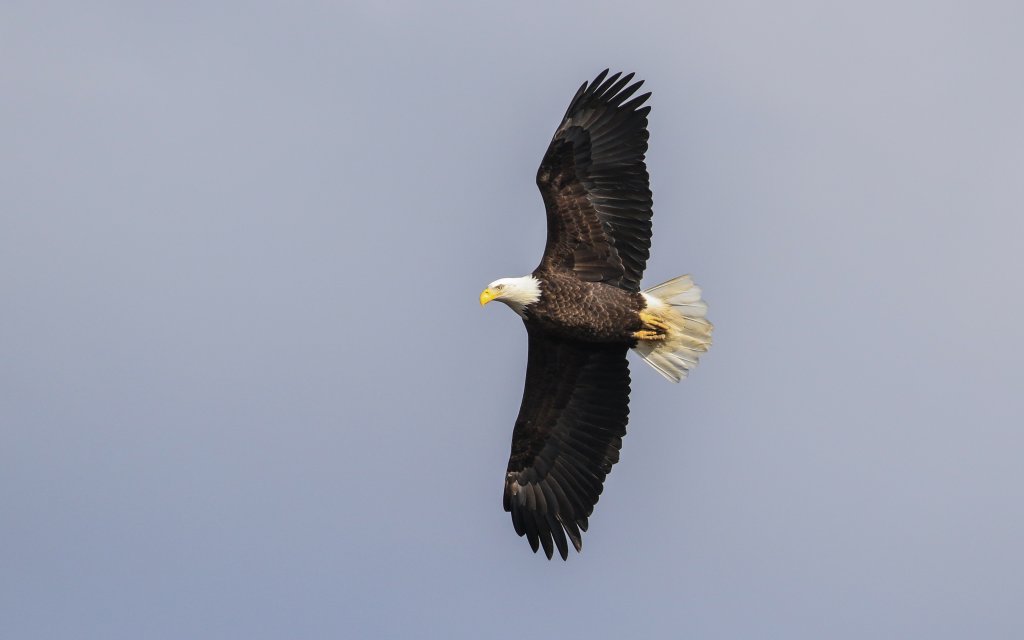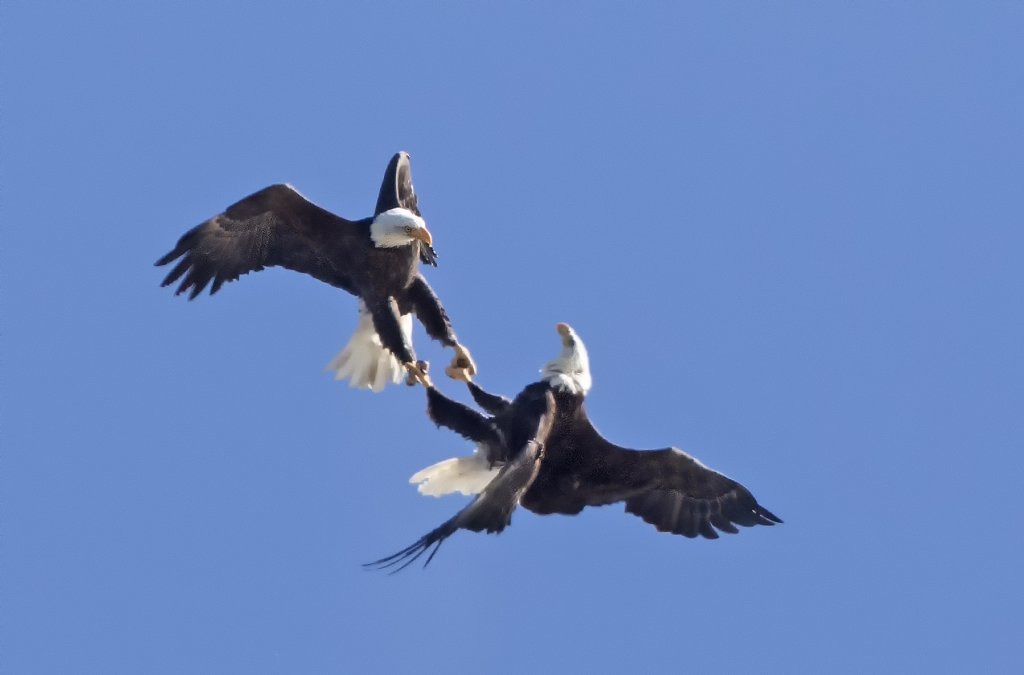The Bald Eagle has long served as a symbol of freedom, strength, and democracy in the United States, selected as the young country’s emblem in 1782. At the time of this designation, the species was a regular sight throughout North America, including Cape May County. However, population declines became evident by the end of the 19th century and would continue for close to 100 years.
Witmer Stone, one of Cape May’s great ornithologists, included the following in his 1937 classic, Bird Studies at Old Cape May: “Most of the Cape May County Eagle nests have been located in more or less inaccessible spots in the heart of deep swamps or dense stretches of woodland, due perhaps to the antipathy of farmers who regard the Eagles as enemies to poultry yards and cut down the Eagle trees when they come upon them. The persistence of egg collectors, too, has had much to do with the difficulties that the birds have experienced in raising their broods.”

The problems did not end there. The insecticide DDT (dichloro-diphenyl-trichloroethane), which became widely available during the 1940s, posed perhaps the greatest threat to eagles. The very effective DDT washed into water bodies where it was absorbed by plants, then fish, and eventually fish-consuming eagles. This exposure was not enough to kill an eagle but was enough to alter its calcium metabolism, resulting in thinner eggshells which would crack and break during incubation, or never hatch at all.
This, along with other health and environmental concerns, led to a US ban on DDT in 1972; the Bald Eagle gained formal protections in most of the Lower 48 under the Endangered Species Act in 1978. Yet, many wondered if it was too little, too late. By the late 1970s, just one pair of territorial eagles remained in the Garden State, along the Delaware Bayshore in Cumberland County. The population of another fish-loving raptor, the Osprey, was likewise reduced to just a few dozen pairs statewide. The Cape May Hawkwatch, a project of NJ Audubon’s Cape May Bird Observatory that samples each autumn’s raptor migration, recorded just 12 Bald Eagles during its inaugural season in 1976, and an all-time low of 5 in 1979.
Yet, as with any classic American underdog, the Bald Eagle endured and made a remarkable comeback in the decades that followed. Government agencies, non-profits like NJ Audubon, and private citizens all worked together to preserve habitat, improve the health of waterways, and instill a new environmental ethic in the name of our national bird. Locally and nationally, the Bald Eagle is thriving again. In fact, a recent press release from the NJ Department of Environmental Protection notes that both Bald Eagle and Osprey will soon be dropped from the state’s Endangered Species list.
That’s something my 12-year-old self wouldn’t have believed while searching the bayshore marshes during DEP’s (now no longer necessary) mid-winter Bald Eagle survey; back when a full weekend of field time typically produced just two or three eagles. But the numbers don’t lie. The NJDEP reports that there are now over 250 eagle pairs nesting in the state, along with about 800 pairs of Osprey. The rise is evident at the Cape May Hawkwatch, too. The largest season sums for Bald Eagle have all occurred in the last 10 years, with a record 1,247 tabulated in 2022!
On this Fourth of July, I hope you will take a moment to reflect on the positive outlook for our national icon and appreciate the natural resources that make the Cape May peninsula such a special place for residents and visitors alike.








